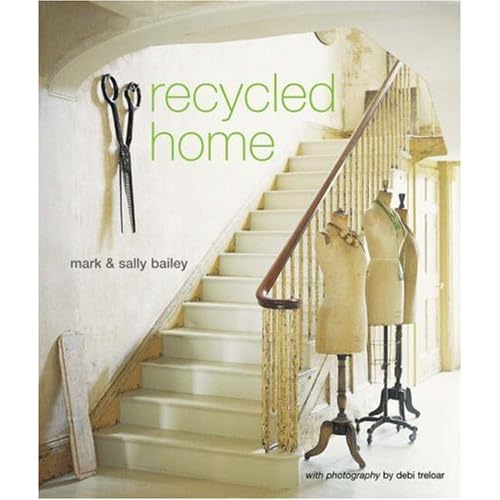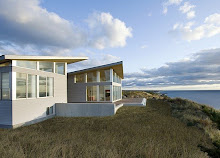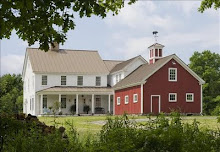
It's finally time to focus on the interiors of THE CONCORD GREEN HOME, after blogging for the past few weeks about its construction. I look forward to sharing ways we are creating a sustainable and healthy home that still honors its historic setting.
Most of the eco-friendly design pioneers have had a super-modern bent. While I love pouring through their portfolios, my goal is to show that these strategies are just as compatible with classic style.
Here are 10 of my favorite "go-to" green and healthy strategies. What are yours?
TEN CLASSIC DESIGN STRATEGIES FOR GREENER INTERIORS1. Reclaimed Building ComponentsHardwood floors (
see my earlier post) are a great way to incorporate the beautiful patina of old growth wood, salvaged from local barns, mills and homes. It doesn't hurt that reclaimed wood fits right in with all the hot design trends, from Belgium, Sweden, France and beyond.
Or consider antique stone and brick, rescued from narrow old Boston streets or an ancient Tuscan tower (of course, that would only be green if you are lucky enough to live near Tuscany, and don't have to fly it over an ocean).
 I snapped this photo of antique stone and concrete copies at the Paris Ceramics showroom. They have a beautiful selection from all over the world.
I snapped this photo of antique stone and concrete copies at the Paris Ceramics showroom. They have a beautiful selection from all over the world.Let the sunshine in! Keep the lights off and save energy. Avoid blocking precious light with heavy, dust-collecting drapery. Use solid shutters, plantation or cottage-style blinds, linen and other natural fibers that filter beautiful sunlight all day long. Some of these selections also provide terrific insulation on colder nights or let you control heat gain in summertime.
To magnify the sun's rays further, use a small dose of reflective surfaces like mirrors and glossy finishes, along with light colored walls and painted floors - design secrets that figure prominently in sun-starved Swedish interiors.
 Solid shutters grace the windows of this charming nursery. Design by Shannon Bowers.
Solid shutters grace the windows of this charming nursery. Design by Shannon Bowers. Reuse and recycling are always better than building new. Happily, antiquing happens to be a very green thing to do. You can source online at high end sites, such as
1stdibs.com or
Bond & Bowery, or search for bargains on
ebay or
craigslist. Re-purposing old pieces in new ways can be quite satisfying, whether it be conversion of an old dresser as a new bath vanity (
see my earlier post), or metal gym lockers as laundry storage.
Here is the
Before and
After of an old vanity that I found on Craigs List, refinished as a writing desk for a young girl's bedroom.
 BEFORE: Tired old vanity purchased via Craigs List for $100...
BEFORE: Tired old vanity purchased via Craigs List for $100...
 AFTER: Reborn as a sweet writing desk with painted and hand-rubbed wax finish, and glass knobs. Available in our "Reuse Recycle ReSale" - see details at bottom of sidebar on right.
AFTER: Reborn as a sweet writing desk with painted and hand-rubbed wax finish, and glass knobs. Available in our "Reuse Recycle ReSale" - see details at bottom of sidebar on right.The most commonly used paints and finishes, even some eco-friendly varieties, are filled with nasty volatile organic compounds that off-gas harmful fumes in your home, long after that fresh-paint smell disappears. (Of particular concern, the nesting instinct that has expecting parents hurriedly painting the new nursery lands baby in a toxic soup environment.) I specify
Mythic Paint (even the primer doesn't smell!) on most of my design projects.
 Mythic Paint: Safe for People. Safe for Pets. Safe for the Earth.
Mythic Paint: Safe for People. Safe for Pets. Safe for the Earth.I also love
Farrow and Ball paints for walls - not only does its historically inspired color palette have incredible depth and richness, its clay-pigment formula is naturally non-toxic.
Lastly, a word on the ubiquitous polyurethane, used to finish floors, furniture and many other surfaces in the home. Avoid! This stuff is extremely toxic!!! Look for natural finishes and other alternatives - depending on the requirements of your project. There are more and more quality alternatives being introduced all the time. Or you can turn back to time-tested methods of our ancestors, like tung oil (be careful if you have tree nut allergies), linseed oil and waxes.
5. Closed StorageWhile beautiful, open shelving should be used sparingly, as it collects dust (and grease in the kitchen) - not good for a healthy home. There are so many gorgeous options too, from glass-front cabinets, to fabric lined doors, to antique hutches.

Fashion icon Kate Spade's own kitchen demonstrates that you can still have the look of open storage, without the build up of dust and grease.  Kitchen designer Cyndy Cantley's fabric-lined doors add a soft, fresh touch to this breakfast nook makeover. Southern Living magazine.
Kitchen designer Cyndy Cantley's fabric-lined doors add a soft, fresh touch to this breakfast nook makeover. Southern Living magazine.  Open shelving is stylish and functional - even when you have to stand on a chair :) - but use it sparingly. Katie Lee Joel's dining room featured in Domino magazine, design by Nate Berkus.
Open shelving is stylish and functional - even when you have to stand on a chair :) - but use it sparingly. Katie Lee Joel's dining room featured in Domino magazine, design by Nate Berkus. Wall-to-wall carpet should be avoided, especially in sleeping spaces. It collects and holds all sorts of offenders, including dust, pollens and pesticides tracked in on shoe bottoms, pet dander, and plain old dirt. If you need a soft landing, area carpets can be cleaned and even replaced. Check out
Flor recycled carpet tiles, which can be washed in the sink, or replaced, one square at a time. They regularly introduce new designs that fit any style home. Even Martha Stewart has a line with them.
7. Renewable ResourcesWhenever possible, specify renewable alternatives for interior selections, such as countertops, and flooring. Concrete countertops can range from industrial cool to warm European rustic, depending on the color and type of finish (
see my earlier post). Bamboo flooring, made from rapidly renewable grass, has come a long way, now offering different grain selections that are not just for super-modern spaces.
 The juxtaposition of rough and smooth - concrete countertops surround a smooth farmhouse sink - a lovely mix. Kitchen design by Shannon Bowers - House Beautiful.
The juxtaposition of rough and smooth - concrete countertops surround a smooth farmhouse sink - a lovely mix. Kitchen design by Shannon Bowers - House Beautiful.Incorporating natural elements, and items meant for outdoor use, is a favorite design strategy. Collect dead branches and create a knock out chandelier, or rewire an old post lantern as a kitchen pendant, or clad interior walls with shingles meant for the outside of your house. They all serve to reconnect us, literally or figuratively, to our outside world, and remind us to take care of it.
 Exterior cedar shingles clad the interior walls of this New England beach home. Source unknown.
Exterior cedar shingles clad the interior walls of this New England beach home. Source unknown.Thankfully, there are a growing number of manufacturers who specialize in eco-friendly furniture, with FSC-certified wood and non-toxic finishes. A new favorite is
Cisco Brothers, a firm that has even helped redevelop their surroundings in South Central LA after the 1992 riots there. Some mainstream retailers, like Crate and Barrel, are also getting into the act.
10. To Bed... Organic MattressesWe all spend a third of our lives in bed. And yet, most commercially available mattresses are filled with chemicals, even those that cost several thousand dollars. Shop for the healthiest mattress you can afford. This is one area in which you don't want to skimp. Look for the
GreenGuard label.

The Organic Mattress offers a nice selection of mattresses, pillows, linens and accessories like mattress toppers and dust mite covers. Enjoy!
 A sliding door partitions off the home office from the guest room in this California remodel, featured in one of my favorite books: The Barefoot Home.
A sliding door partitions off the home office from the guest room in this California remodel, featured in one of my favorite books: The Barefoot Home. Barn doors with glass uppers featured in House Beautiful's A Barn-Style House in Sun Valley. Design by Chipper Joseph, architecture by Sandra Vlock and Glenn Arbonies. Photo: Maura McEvoy.
Barn doors with glass uppers featured in House Beautiful's A Barn-Style House in Sun Valley. Design by Chipper Joseph, architecture by Sandra Vlock and Glenn Arbonies. Photo: Maura McEvoy. Hardware can be exposed, or boxed in with all the rest of this wonderful trim and beadboard. Source unknown.
Hardware can be exposed, or boxed in with all the rest of this wonderful trim and beadboard. Source unknown.  Even mainstream catalogs (I believe I found this on West Elm's website) appreciate the appeal of barn doors.
Even mainstream catalogs (I believe I found this on West Elm's website) appreciate the appeal of barn doors. Gorgeous tall sliders mix with stone walls to create an inviting indoor-outdoor connection. Crown Industrial.
Gorgeous tall sliders mix with stone walls to create an inviting indoor-outdoor connection. Crown Industrial. Who wouldn't want to work in this home office? Note the way the track extends beyond the mass of the building. Very cool. Sunset Magazine.
Who wouldn't want to work in this home office? Note the way the track extends beyond the mass of the building. Very cool. Sunset Magazine.











































































